Villages and towns wiped off the face of the earth, mass executions, rapes and looting ... The German army in 1914 was no less ruthless and inhuman than in 1939. It is worth remembering.
The first units of the Imperial German Army crossed the Belgian border on August 4, 1914. Thus, Germany broke the country's neutrality, which they themselves guaranteed. Despite persistent defense, the Belgian army retreated under pressure from the powerful invader's forces.
Don't be provoked by the Germans
On August 20, the Germans entered Brussels. They introduced ruthless terror on the occupied territories of the country. It was supposed to be a response to the harassment activities carried out at the rear of the army of Emperor Wilhelm II. Berlin accused alleged partisans of these actions - the so-called franc-tireurs that is, freelancers .
Meanwhile, most Belgian civilians fell victim to German delusions. As Ian Kershaw stated in his book, To Hell and Back. Europe 1914-1949 ”:
During training, German soldiers were instilled with an almost paranoid fear of guerrilla warfare. Soldiers often hated to blame civilians for alleged (and in most cases imaginary) actions of snipers or for incidents in which self-fire was taken for treacherous attacks from behind. Collective "punishments" were imposed even when the soldiers knew full well that their victims were innocent.
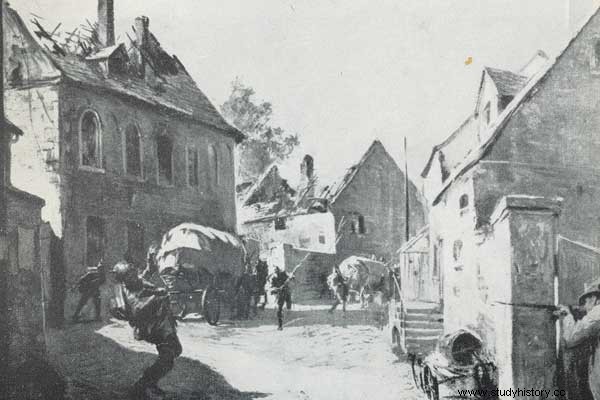
German soldiers saw the guerrillas everywhere.
The Belgian government, fearing for the lives of its own citizens, instructed them not to take any action against the invaders. In each municipality, notices were posted ordering the handing over of weapons to local authorities, so as not to provide any pretext for repressive measures that would result in bloodshed, looting or massacre of innocent people .
List of disgrace
The first 14 hostages were shot by the Germans on the first day of the invasion in Warsage. 25 houses were also set on fire. The village of Battice also went up in smoke. 147 buildings burned down there and 33 inhabitants were killed. One of the German officers described the pacified village as follows:
The whole village was on fire, the cattle roared desperately in the barns, the half-burned hens ran madly around, and two men in peasant clothes lay dead, leaning against the wall.
The town of Herve was burnt down by imperial soldiers on August 8, 1914, four days after its capture. They shot 40 civilians, including 5 women. The fire spread to over 300 buildings. A German journalist wrote then in his report that the city of was wiped off the face of the earth (...). The market square was littered with corpses, it smelled of burnt everywhere, a pile of stones was left from the church.
In the village of Melen, among 108 people killed there were both 80-year-old elderly and several-year-old children. One of the young girls was raped by twenty soldiers before his execution. On August 10, 10 inhabitants were murdered in Linsmeau.
Barbarism continued
After the capture of the Liège fortress, the main point of resistance of the Belgians on the path of the victorious Kaiser army, the situation of the civilians did not change at all. On August 20-21, the inhabitants of the town of Andenne were massacred, killing 110 people. In Seilles on the opposite side of the Meuse, the occupiers shot 50 people and their homes were looted.

Victims of the Andenne massacre.
After the massacre in Andenne, German general Karl von Bülow, commander of the 2nd Army marching through Belgium, ordered the announcement to be posted in neighboring towns. It said that: The people of Andenne, after manifesting their peaceful intentions towards our troops, attacked them in the most treacherous way. With my consent, the general in charge of them ordered the town to be razed to the ground and executed 110 people. In von Bülow's opinion, this was to be a warning that the Belgians would not take action against his troops.
On August 22, particularly dramatic events took place in the town of Tamines. After it was captured, after a two-day orgy of rapes and looting, they let the drunken soldiers put on all moral constraints. They then herded around 400 of its inhabitants into the town's main square and started shooting into the crowd. Those who did not die from the bullets were stabbed with bayonets. As a result of this barbarism, 384 people died, of which the youngest was 13 years old and the oldest 84.
Slaughter in Dinant
After capturing Namur, another important Belgian fortress, the occupiers changed tactics. They stopped summary executions and took more thoughtful actions. Namely, in cities they posted announcements announcing the taking of up to 10 hostages from each street. They were to be shot after even the most trivial offense against the German army. Thus, in the towns conquered in succession, the occupiers preventively detained more significant residents, mainly members of local authorities and clergy. Especially the latter were accused of anti-German agitation and encouraging resistance.
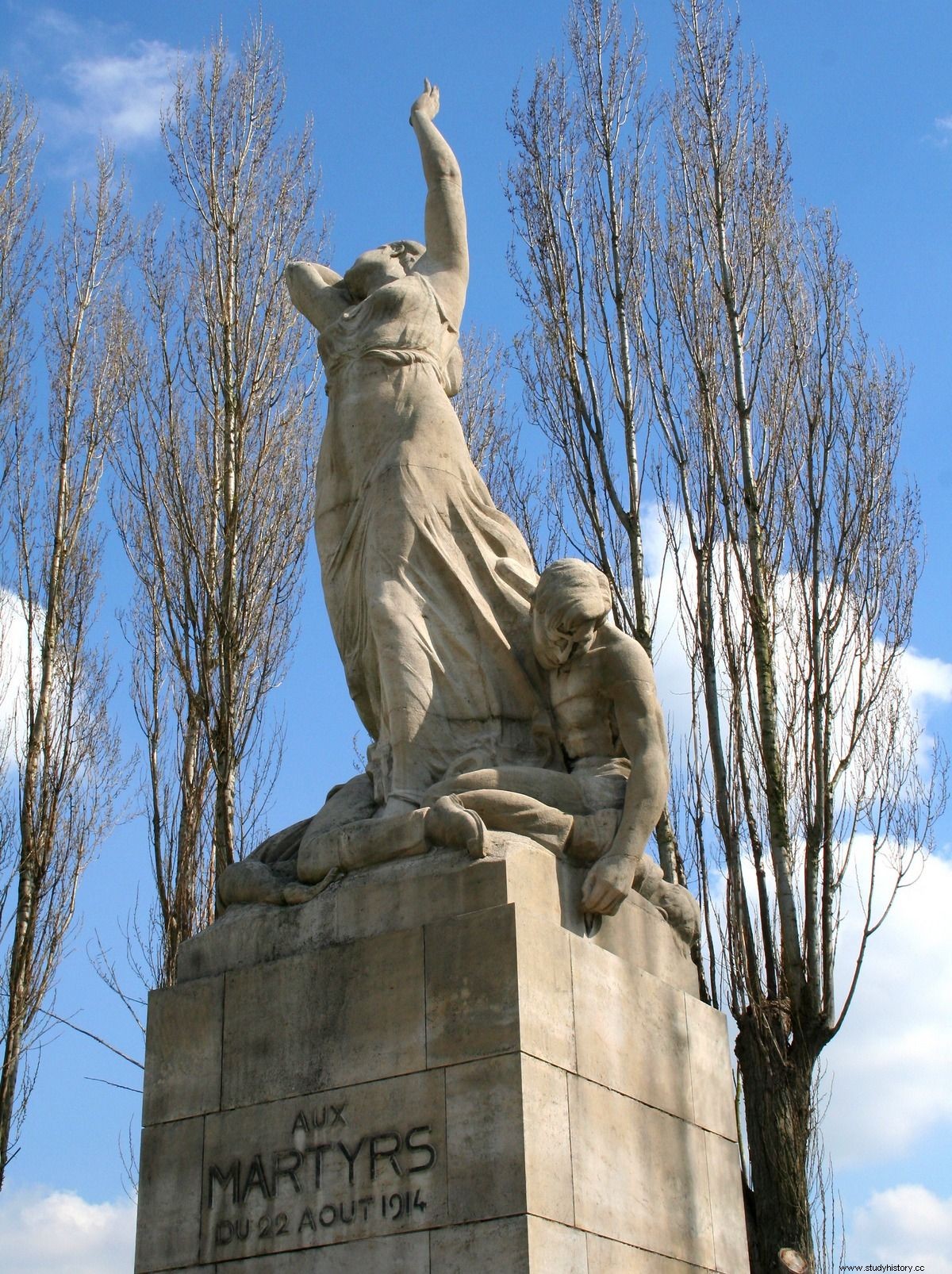
Monument to the victims of the Tamines massacre.
Belgian roads have also swarmed with refugees. In the border town of Visé, where occupation forces were allegedly shelled on August 23, 2/3 of the houses were destroyed and around 30 inhabitants were killed. In addition, 700 men were deported to forced labor in Germany. About 4,000 the rest fled to nearby towns. The burned-out city was completely deserted. For the American diplomat who later visited Visé, it reminded us of the destroyed Pompeii.
At the same time as Visé was burning down, the Dante scenes took place in Dinant. The population of this town was accused of obstructing the Germans from rebuilding damaged bridges, an eyewitness of which was to be General Max von Hausen himself, commander of the 3rd Army. Several hundred inhabitants of Dinant were rounded up in the town's main square.
The men were separated from the women, and then placed on opposite sides of the square in two rows, the first of which was on his knees. Two troops stood in the middle and opened fire. The German soldiers were methodical and ruthless. The rifles did not stop until there were no more standing or kneeling targets. 612 people died in the massacre. The youngest of them was a three-week-old boy, Feliks Fivet.
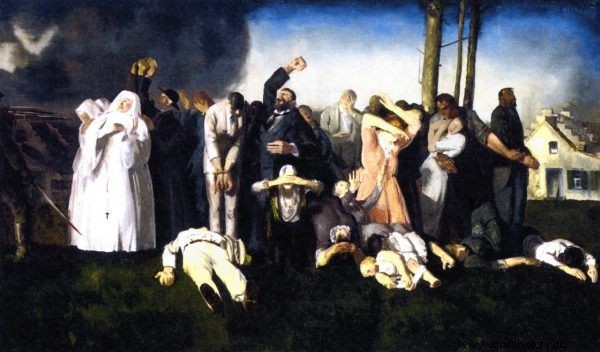
"Dinant Massacre" by George W. Bellows.
The tragedy of Louvain
The destruction of this old university city was indirectly caused by a scared horse that terrified the occupiers stationed there. There was a chaotic shooting, during which panicked German soldiers, hunting imaginary partisans, offended each other. It was enough for General von Lüttwitz to make the decision to raze the city to the ground. Arson, murder and robbery lasted five days, until August 30, 1914. The world public was shocked especially by the burning of the famous fourteenth-century university library , full of valuable medieval manuscripts and incunabula.
On August 28, while the orgy of destruction in Louvain was in full swing, American diplomat Hugh Gibson showed up. What he saw was shocking:
Houses with blackened walls and smoldering beams were still burning down; the sidewalks were hot, all covered with ash. Corpses of people and horses littered around. (…) Many bodies were distended, which meant that they died a few days ago. Various kinds of remains, furniture, bottles, torn clothes (...) lay scattered among the rubble and ash.
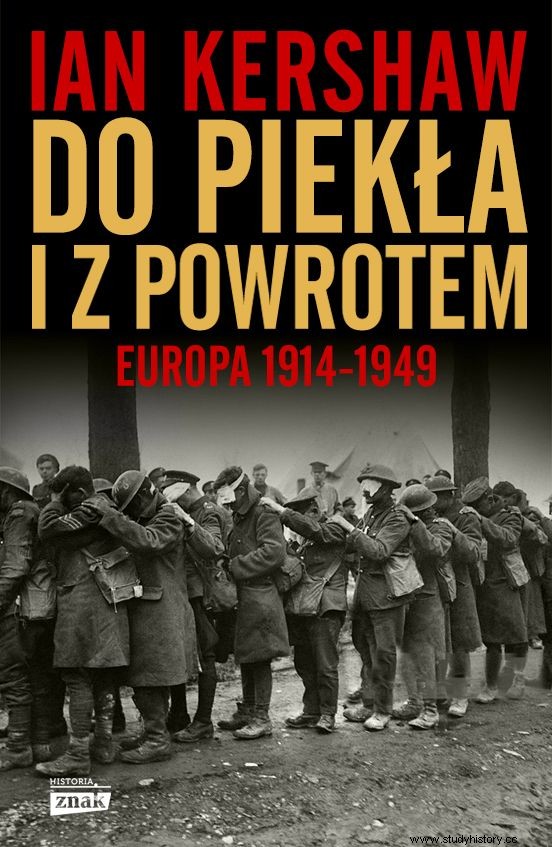
In Louvain, 248 people died and over a thousand buildings were burnt. Those who survived were expelled, and several hundred of its citizens, including women and children, were transported in cattle cars to the camp in Münster .
The Germans wash their hands
During the first month of the Great War, German soldiers murdered about 6,000. defenseless Belgian civilians. It was a well-thought-out action, prepared with typically German pedantry, aimed at intimidating and breaking Belgian society. In their march towards France, the Germans needed a calm rear and that was to be the purpose.
The German Ministry of Foreign Affairs, in its official statement, blamed the responsibility for all these victims on the Belgian government, which allegedly incited its own citizens to oppose the Germans! In passing it was added that women and girls also took part in the fight and blinded the wounded by tearing out their eyes . Needless to say, it was an absurd message.
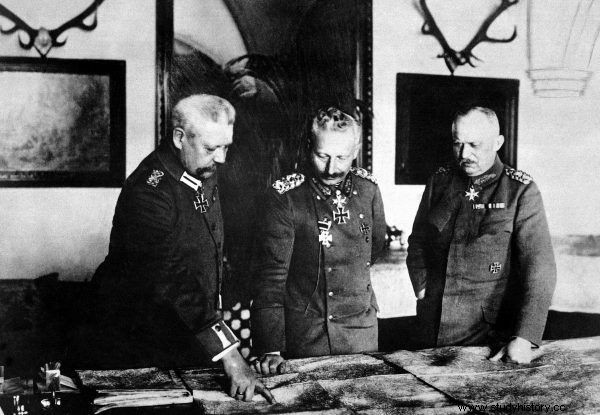
After a wave of criticism fell on Germany in the fall of 1914, Emperor Wilhelm II (in the center) wrote a hypocritical letter to President Wilson.
However, this position was upheld by Kaiser Wilhelm II himself. After a massive wave of indignation in the world press following the destruction of Louvain, he sent a special telegram to US President Woodrow Wilson.
In it he wrote hypocritically that his heart was bleeding because of the misfortunes that hit Belgium as a result of the criminal and barbaric actions of the Belgians. Later in the message, he brazenly accused the Belgian government, whose actions forced the German military to use the strictest repressive measures against, as he put it, the bloodthirsty people .
